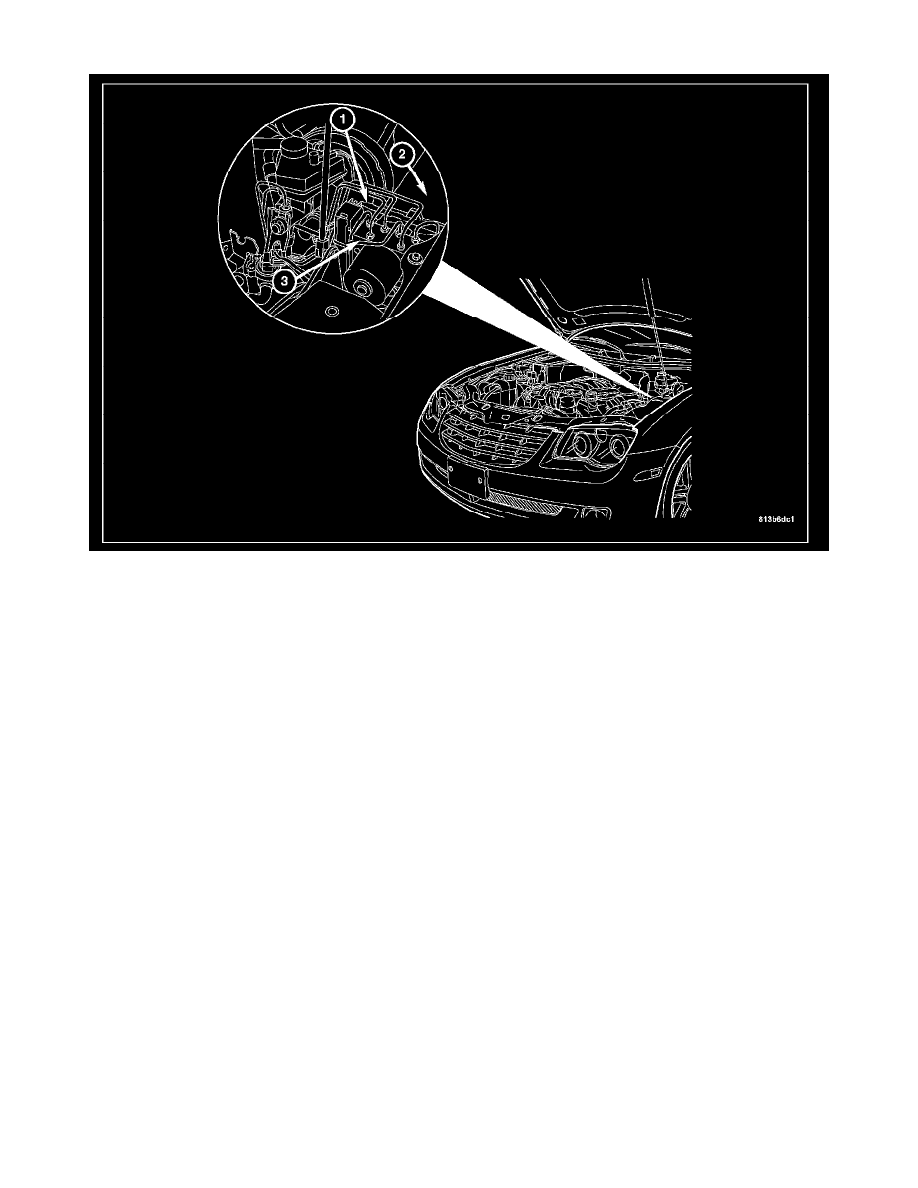Crossfire SRT-6 V6-3.2L SC VIN N (2005)

Electronic Brake Control Module: Description and Operation
The Controller Antilock Brake (CAB) (1) is located in the engine compartment in front of the Underhood Accessory Fuse Block (2).
The CAB is a microprocessor-based device which monitors the Antilock Brake System (ABS) during normal braking and controls it when the vehicle is
in an ABS stop. The CAB is mounted to the Hydraulic Control Unit (HCU) (3) as part of the Integrated Control Unit (ICU). The CAB uses a 47-way
electrical connector on the vehicle wiring harness.
The CAB is powered through Fuse 3 (50 amp) located in the engine fuse block.
The primary functions of the Controller Antilock Brake (CAB) are to:
-
Monitor the Antilock Brake System (ABS) for proper operation.
-
Detect wheel locking or wheel slipping tendencies by monitoring the speed of all four wheels of the vehicle.
-
Control fluid modulation to the wheel brakes while the system is in an ABS mode.
-
Store diagnostic information.
-
Provide communication to the DRB III(R) scan tool while in diagnostic mode.
-
Illuminate the amber ABS warning indicator lamp.
-
Illuminate the brake assist (BAS)/electronic stability program (ESP) lamp on the instrument panel when a traction control event occurs.
The CAB constantly monitors the Antilock Brake System for proper operation. If the CAB detects a fault, it will turn on the amber ABS warning
indicator lamp and disable the Antilock Braking System. The normal base braking system will remain operational.
The CAB continuously monitors the speed of each wheel through the signals generated by the wheel speed sensors to determine if any wheel is beginning
to lock. When a wheel locking tendency is detected, the CAB commands the CAB command coils to actuate. The coils then open and close the valves in
the Hydraulic Control Unit (HCU) that modulate brake fluid pressure in some or all of the hydraulic circuits. The CAB continues to control pressure in
individual hydraulic circuits until a locking tendency is no longer present.
The CAB contains a self-diagnostic program that monitors the Antilock Brake System for system faults. When a fault is detected, the amber ABS
warning indicator lamp is turned on and the Diagnostic Trouble Code (DTC) is then stored in a diagnostic program memory. These DTCs will remain in
the CAB memory even after the ignition has been turned off. The DTCs can be read and cleared from the CAB memory by a technician using the DRB
III(R) scan tool.
CAB INPUTS
-
Wheel speed sensors (four)
-
Brake lamp switch
-
System and pump voltage
